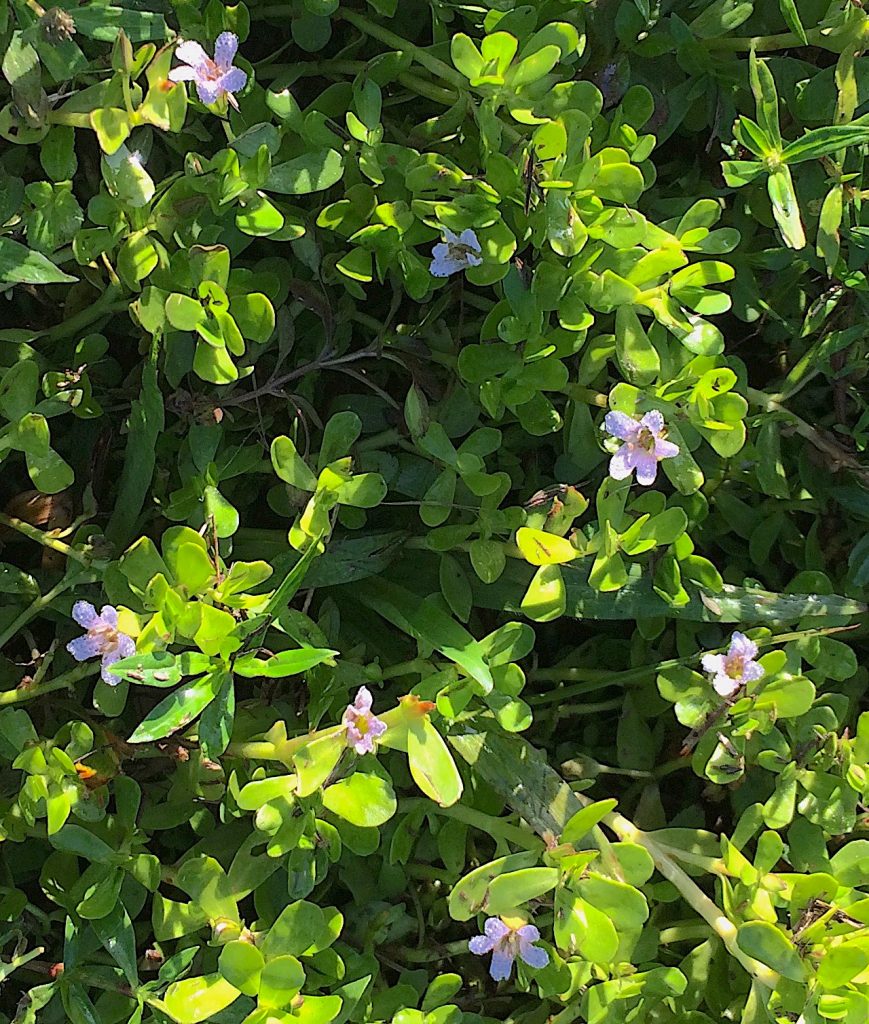
Photos and article by Green Deane
There is no getting around it: Bacopa Monnieri is bitter… really bitter. But of course part of that perception depends on what bitter gene you have. There are several variations.
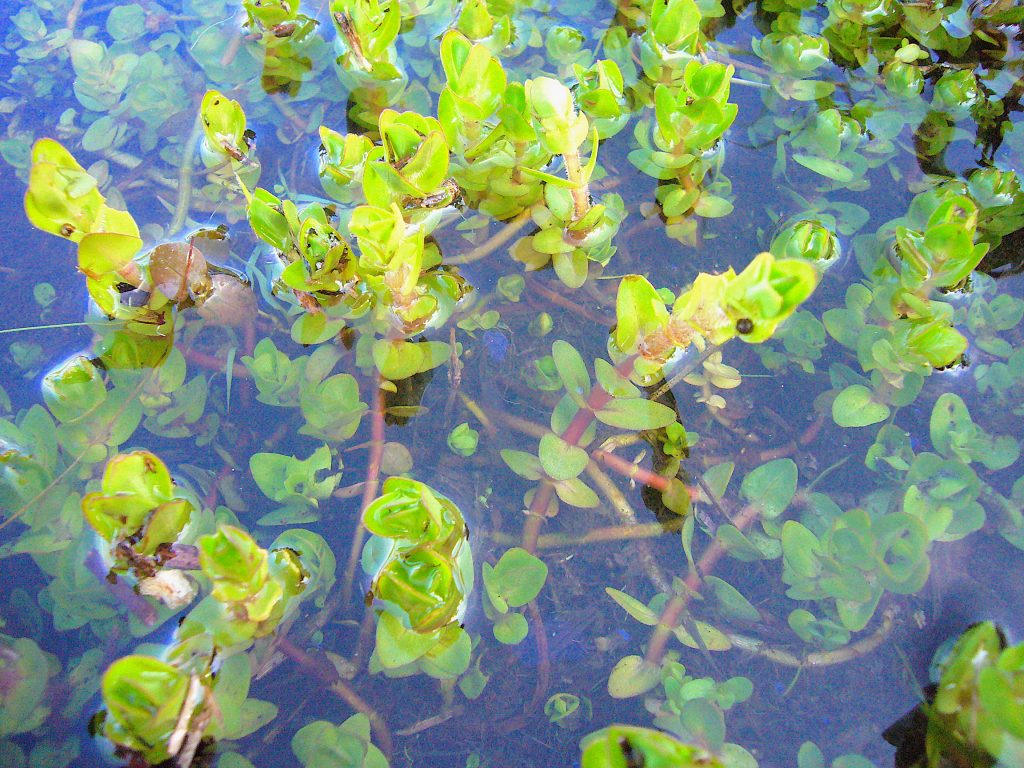
Some like the bitter flavor all their lives, some dislike the bitter flavor all their lives. Some are extremely sensitive to bitter as a child — exponentially so —but very insensitive to it as an older adult. They’re the ones who could not stand broccoli as a kid and love it in retirement. At any rate Bacopa monnieri is bitter, as are two of its local relatives, Bacopa innominata and Bacopa repens. A fourth, Bacopa Caroliniana, is not bitter at all and is the least like the other Bacopas. How do you tell them apart?
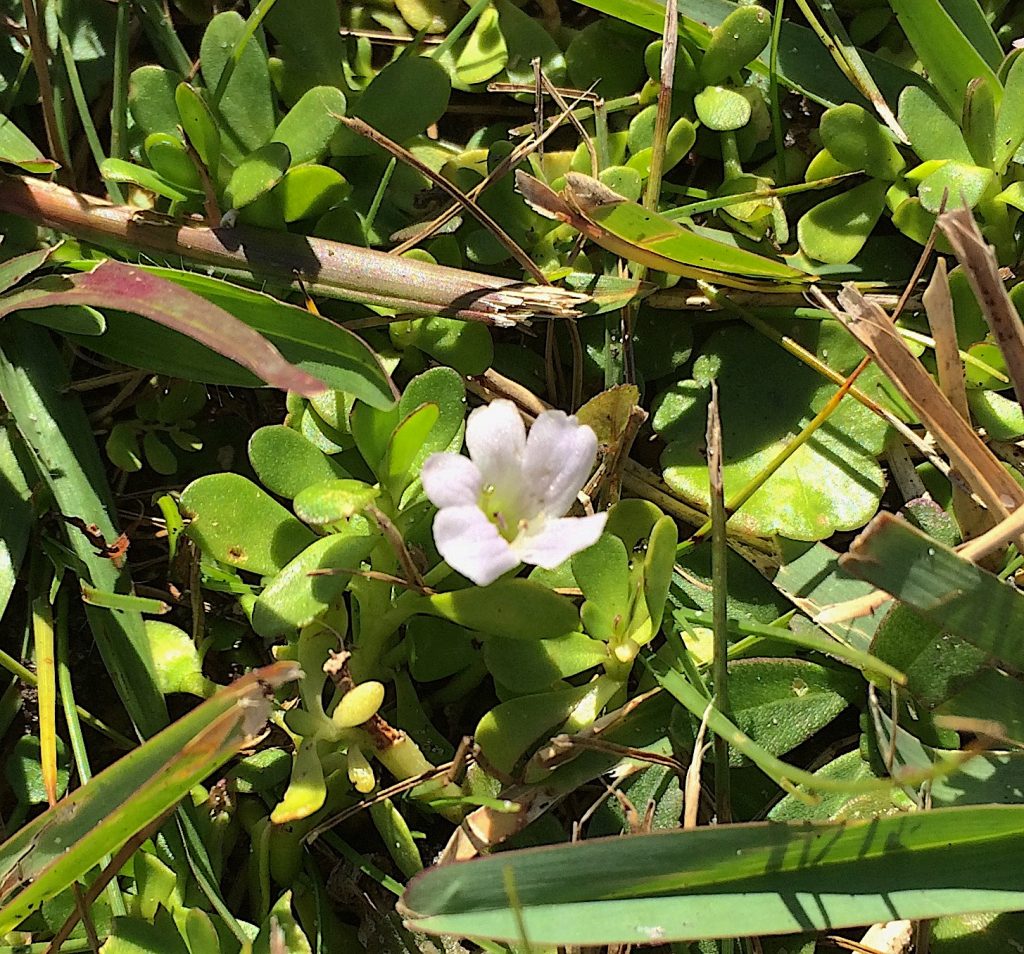
There is no shortage of research on the memory effects of Bacopa monnieri. If it had been invented by a pharmaceutical company it would be in all the water supply systems by now. As it is a lowly plant used for some 7,000 years there’s no patent money to made off it. But the research ranges from its potential use from Alzheimer’s to Attention Deficit Disorder to migrains. Interestingly it appears to be able to improve most people’s memory function whether 15 or 85.
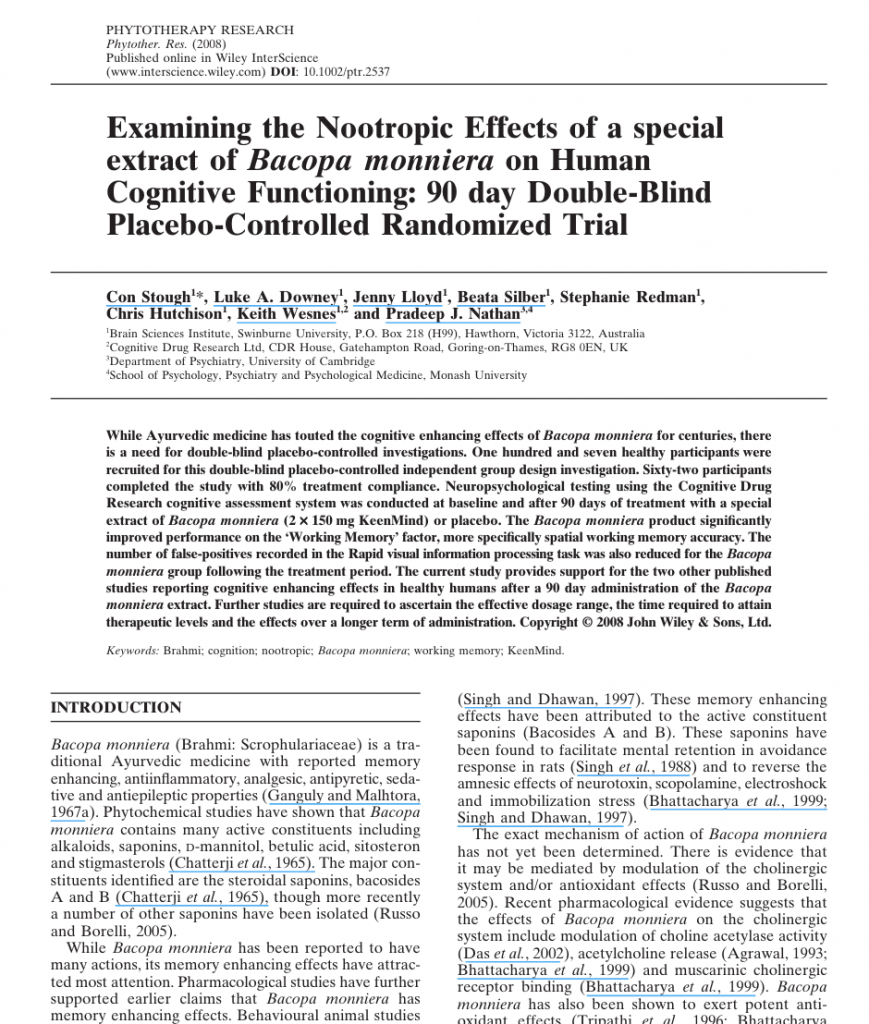
How Bacopa Monnieri works is a bit of a debate. It might have several avenues of efficacy. One is stopping the reduction of chemicals the brain uses for thinking and memory. Another could be it up regulates genes and they prompt new memory cells. It could increase cerebral blood flow and is a strong anti-oxidant. Any or all are possible. But the research also seems to agree that it takes time to do it herbal magic, usually several weeks.
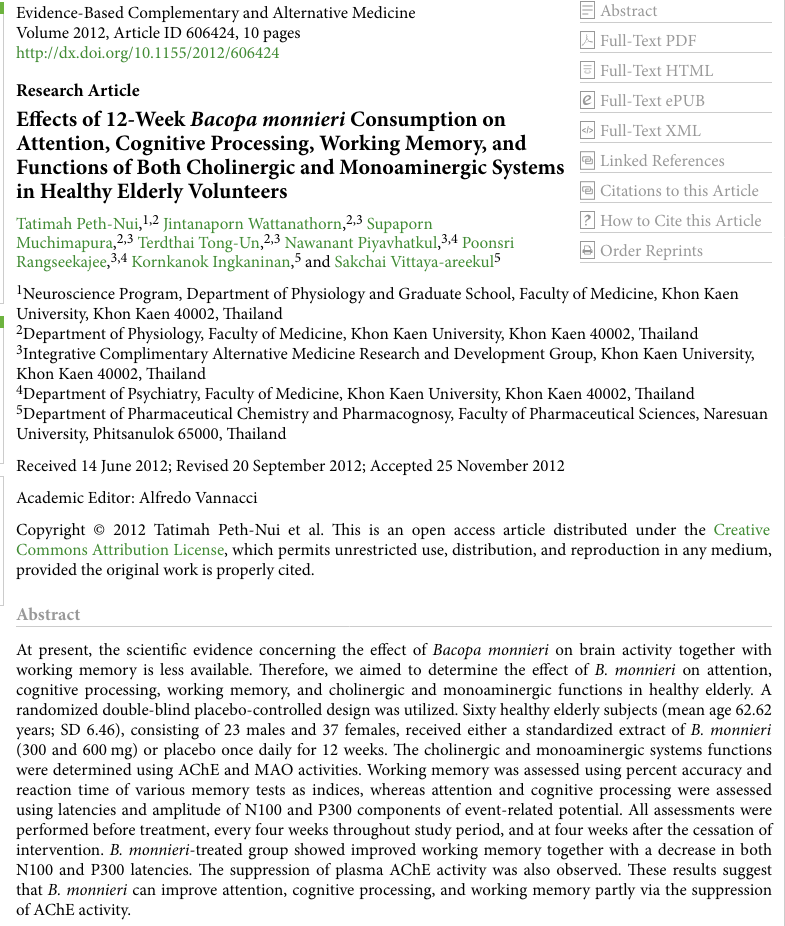
Most of the studies are — like bitter — a variation of a theme. Sometimes the subjects are all older than 70, or the are all older than 55 with memory issues, or healthy volunteers of all ages. Sometime the does is 125 twice a day, sometime it is by weight (300mg under 200 pounds, 450 mg over 200 pounds.) Or it is an extract or 300 mg once a day. And usually there is no immediate improvement (in hours) but over weeks memory improves, information processing is faster, and better associate learning.
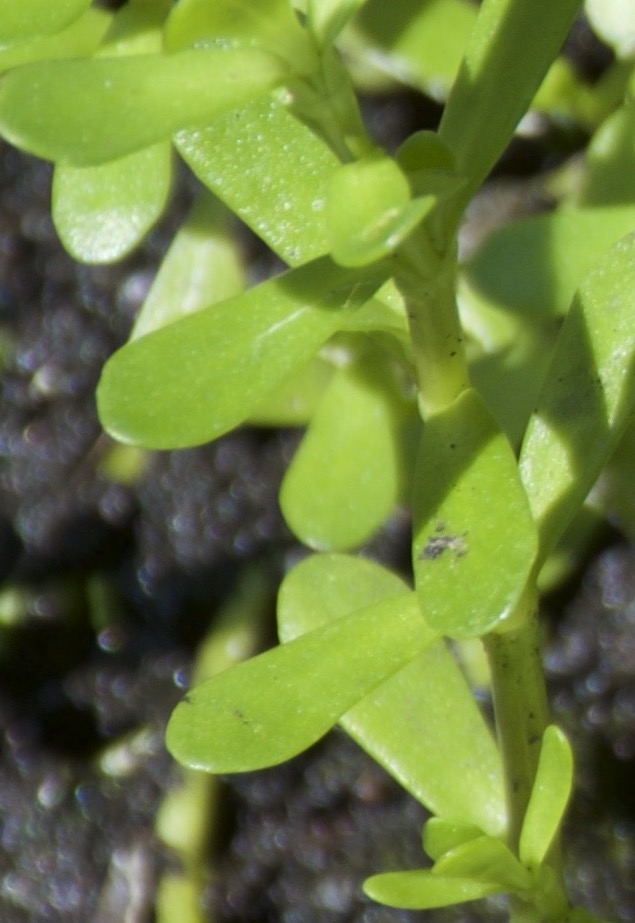
Whether you call Bacopa a food or a medicine perhaps depends upon your tastes, or needs. Some folks chop it up and toss some in salads. I now more people who use it as a nootropic. Four people have told me it has made a significant difference in their memory abilities. The genus name “Bacopa” is the Latinized name the aboriginals Indians called it in what is now French Guiana. Monnieri honors Louis Guillaume le Monnier, 1717-1799, French botanist and royal physician to Louis XV. You can see an earlier article about this Bacopas and B. caroliniana here and learn why they are called “Hyssop.”
Green Deane’s “Itemized” Plant Profile
IDENTIFICATION: The leaves are succulent and thick, 1/8 inch wide and 5/8 inch long. They’re oblanceolate (skinny on this end, fat on this end) opposite, and have 1-veined. Flowers are small and white, with 4 or 5 petals. This species is also called the Smooth Water Hyssop and is often spelled Waterhyssop.
TIME OF YEAR: All year
ENVIRONMENT: Fresh and brackish waters, usually sunny damp spots.
METHOD OF PREPARATION as a food: Raw when fresh, but very bitter. It can be steamed for a cooked vegetable and in India it is dried and used as a tea… let’s just say that tea is a very acquired taste. Memory applications vary greatly.
You can see an earlier article about some Bacopas here.
Three Bacopa studies are:
https://www.hindawi.com/journals/ecam/2012/606424/
https://www.ncbi.nlm.nih.gov/pubmed/12093601
https://www.ncbi.nlm.nih.gov/pubmed/18683852

